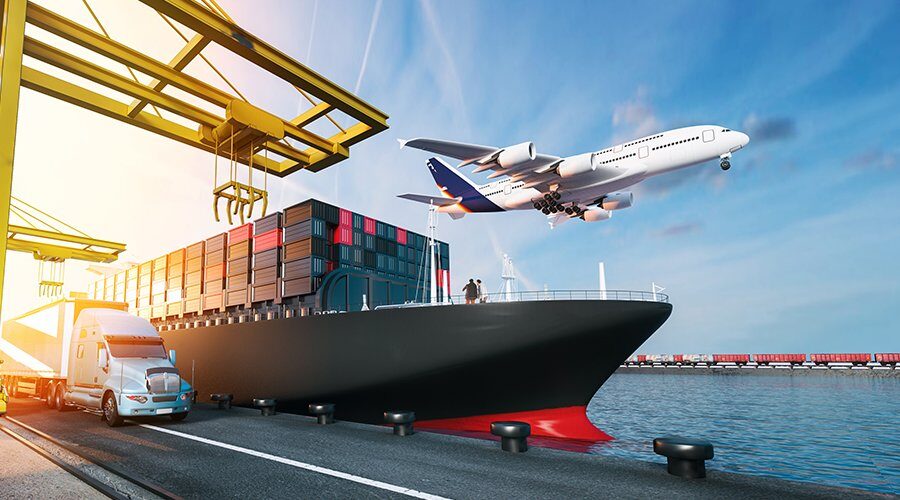
In the realm of logistics, choosing the right mode of transportation is crucial for businesses to ensure the smooth movement of goods. Sea freight and air freight are two widely utilized methods for transporting goods across long distances. Understanding the differences between these modes is essential for making informed decisions. In this article, we will explore the six major distinctions between sea freight and air freight, shedding light on their unique characteristics and benefits. Let’s delve into the world of logistics and uncover the contrasts between sea freight and air freight.
One of the primary differences between sea freight and air freight is the speed of transportation. Air Freight is renowned for its unparalleled speed, enabling goods to reach their destination swiftly. On the other hand, Sea Freight generally takes longer due to the inherent nature of maritime transport. While air freight offers rapid transit times, sea freight provides a more cost-effective option for less time-sensitive shipments.
Cost considerations play a significant role in logistics decisions. Air Freight is typically more expensive compared to sea freight due to factors such as fuel costs and the limited capacity of aircraft. Sea Freight, although slower, offers a cost advantage for transporting large volumes of goods. Businesses must evaluate their budget and shipment requirements to determine the most cost-effective option between sea freight and air freight.
Air freight is suitable for smaller and lighter shipments due to the limited cargo space available on aircraft. Larger and bulkier items are better suited for Sea Freight, as ships have the capacity to accommodate substantial volumes of goods. Businesses must assess the size and weight of their shipments to select the appropriate mode of transportation that can handle their specific requirements.
As environmental sustainability becomes increasingly important, considering the ecological impact of transportation methods is crucial. Air Freight is known to have a higher carbon footprint compared to sea freight due to the higher fuel consumption of aircraft. Sea freight, being a more energy-efficient option, emits fewer greenhouse gases per unit of cargo transported. For businesses committed to reducing their carbon footprint, sea freight offers a greener solution.
While air freight offers excellent accessibility to major cities and airports worldwide, Sea Freight provides access to a broader range of destinations through ports. Landlocked areas or regions without well-connected airports may find sea freight more feasible for their logistics needs. It’s important for businesses to consider the accessibility of their specific destinations when choosing between sea freight and air freight.
Both sea freight and air freight operate with strict regulations and safety standards. However, Air Freight is generally considered more reliable in terms of meeting delivery schedules due to its shorter transit times and fewer disruptions caused by weather conditions. Sea freight, although reliable for most shipments, may encounter delays due to adverse weather, port congestion, or other unforeseen circumstances. Businesses must assess their time sensitivity and risk tolerance to determine the level of reliability and safety required for their shipments.
Also, Read Debunking The Myths About Freight Services
When it comes to logistics, making informed decisions about transportation methods is essential for businesses to optimize their supply chain operations. LGL Worldwide Logistics understands the importance of efficient and reliable freight forwarding. Whether you choose sea freight or air freight, LGL Worldwide Logistics is your trusted partner, providing comprehensive logistics solutions tailored to your specific needs.
Consider the speed, cost, size limitations, environmental impact, accessibility, reliability, and safety factors when choosing between sea freight and air freight. Evaluate your shipment requirements, budget, and time sensitivity to make the right choice for your business. Partner with LGL Worldwide Logistics for seamless logistics services and experience the expertise and reliability they bring to your supply chain.
Globally recognized the LGL network covers 500 locations in over 80 countries, our team has a track record of satisfying customers from all industries; we consistently adjust and tailor to suit your needs. We pride ourselves in customer service, aspiring for the very best in industry and solidifying our customer relationships.
LGL is a market-leading logistics provider with a global transport network. Our advanced, integrated shipping solutions ensure your cargo is transported to its destination, anywhere in the world.
Choose the right mode of transport for your goods. Decoding the Logistics Differences Between Air Freight and Road Freight by LGL Worldwide Logistics.